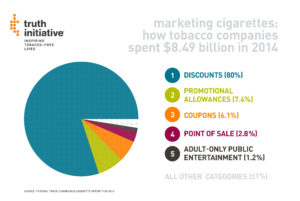A middle-aged cigarette smoker who has smoked for decades is two to three times more likely to die early than someone similar who has never smoked. Tobacco smoking is well known to be a major risk factor for various cancers, lung and cardiovascular problems, and is also linked to other health problems, such as complications in pregnancy, low sperm count in men, oral problems, and increased likelihood of cataracts.
Little wonder then that the World Health Organisation (WHO) sees tobacco smoking as the number one avoidable cause of death in the world. US statistics reveal that smoking causes more deaths each yearthan HIV, illegal drug use, alcohol misuse, motor vehicle injuries and homicides combined. Similar comparisons can be found in UK statistics. However, while there can be few today who are unaware of the toll smoking takes on the body, the effects of long-term tobacco smoking on other areas such as learning and memory are less well known. Read more......Rethinking nicotine and its effects…
Nicotine removed from tobacco smoke is not as harmful as was once thought, a recent Truth Initiative white paper reminds us. Nicotine by itself does not cause cancer. While it may contribute to heart disease and other health problems, nicotine is certainly much less harmful than tobacco smoke. In fact, nicotine can actually provide some benefits, such as improving attention and memory.
 “We need to rethink nicotine and its effects,” said Raymond Niaura, director of Science and Training at Truth Initiative’s Schroeder Institute, and author of the article. “Although nicotine is addictive, its impact varies greatly depending on the product.” The most addictive form of nicotine is inhaled in tobacco smoke. In contrast, nicotine replacement therapies that help smokers quit, such as nicotine gum and the patch, do not pose a significant risk of abuse. New nicotine products—such as electronic cigarettes—likely fall somewhere in the middle, Niaura explains.
Given the devastating health consequences of smoking, Niaura argues policymakers should continue to encourage youth to abstain from tobacco and nicotine. At the same time, they should encourage adult smokers who cannot or will not quit tobacco to move to less harmful products. He notes that the FDA has found Swedish snus smokeless tobacco to be less harmful than other tobacco products. Early studies suggest electronic cigarettes also have fewer toxic effects than traditional cigarettes.
“We need to rethink nicotine and its effects,” said Raymond Niaura, director of Science and Training at Truth Initiative’s Schroeder Institute, and author of the article. “Although nicotine is addictive, its impact varies greatly depending on the product.” The most addictive form of nicotine is inhaled in tobacco smoke. In contrast, nicotine replacement therapies that help smokers quit, such as nicotine gum and the patch, do not pose a significant risk of abuse. New nicotine products—such as electronic cigarettes—likely fall somewhere in the middle, Niaura explains.
Given the devastating health consequences of smoking, Niaura argues policymakers should continue to encourage youth to abstain from tobacco and nicotine. At the same time, they should encourage adult smokers who cannot or will not quit tobacco to move to less harmful products. He notes that the FDA has found Swedish snus smokeless tobacco to be less harmful than other tobacco products. Early studies suggest electronic cigarettes also have fewer toxic effects than traditional cigarettes.
U.S. Department of Health and Human Services releases report on youth use of e-cigarettes
 E-cigarette use among both youth and young adults has increased considerably in recent years. In 2015, more than a quarter of students in grades 6 through 12 and more than a third of young adults had ever tried e-cigarettes.
E-cigarette use among both youth and young adults has increased considerably in recent years. In 2015, more than a quarter of students in grades 6 through 12 and more than a third of young adults had ever tried e-cigarettes.
Learn more about big tobacco’s marketing budget…
The number of cigarettes sold by the largest cigarette companies in the United States to wholesalers and retailers in the U.S. declined from 256.7 billion in 2013 to 253.8 billion in 2014, according to the most recent Federal Trade Commission Cigarette Report.
The amount spent on cigarette advertising and promotion decreased from $8.95 billion in 2013 to $8.49 billion in 2014, due mainly to a decrease in spending on price discounts (discounts paid to cigarette retailers or wholesalers in order to reduce the price of cigarettes to consumers).
Spending on price discounts decreased from $7.64 billion in 2013 to $6.76 billion in 2014. The price discount categories (retail and wholesale) were the two largest expenditure categories in 2014, accounting for 79.7 percent of industry spending in 2014. For the first time, this year’s report breaks out the retail ($5.56 billion) from wholesale ($1.20 billion) price discounts. Price discounts had been the single largest expenditure category every year since 2002.
According to the 2014 Smokeless Tobacco Report, smokeless tobacco sales declined slightly from 128.0 million pounds in 2013 to 127.8 million pounds in 2014. The revenue from those sales increased, however, from $3.26 billion in 2013 to $3.42 billion in 2014.
Read more......
spending in 2014. For the first time, this year’s report breaks out the retail ($5.56 billion) from wholesale ($1.20 billion) price discounts. Price discounts had been the single largest expenditure category every year since 2002.
According to the 2014 Smokeless Tobacco Report, smokeless tobacco sales declined slightly from 128.0 million pounds in 2013 to 127.8 million pounds in 2014. The revenue from those sales increased, however, from $3.26 billion in 2013 to $3.42 billion in 2014.
Read more......
Read more
 spending in 2014. For the first time, this year’s report breaks out the retail ($5.56 billion) from wholesale ($1.20 billion) price discounts. Price discounts had been the single largest expenditure category every year since 2002.
According to the 2014 Smokeless Tobacco Report, smokeless tobacco sales declined slightly from 128.0 million pounds in 2013 to 127.8 million pounds in 2014. The revenue from those sales increased, however, from $3.26 billion in 2013 to $3.42 billion in 2014.
Read more......
spending in 2014. For the first time, this year’s report breaks out the retail ($5.56 billion) from wholesale ($1.20 billion) price discounts. Price discounts had been the single largest expenditure category every year since 2002.
According to the 2014 Smokeless Tobacco Report, smokeless tobacco sales declined slightly from 128.0 million pounds in 2013 to 127.8 million pounds in 2014. The revenue from those sales increased, however, from $3.26 billion in 2013 to $3.42 billion in 2014.
Read more...... 

